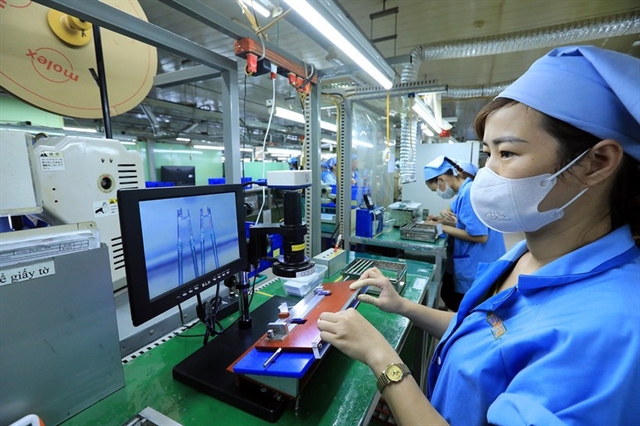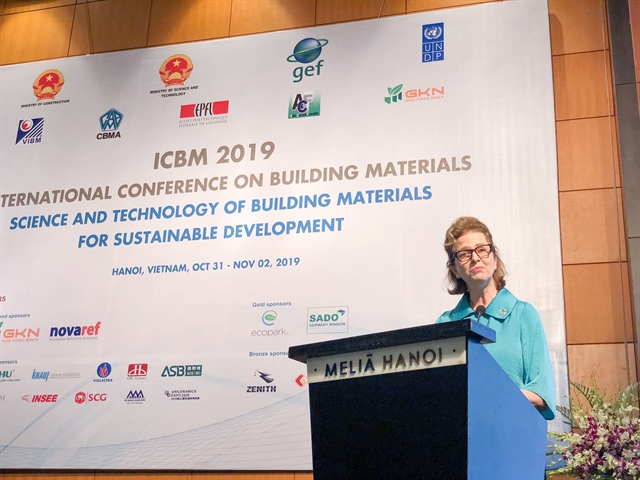 Economy
Economy


|
| Caitlin Wiesen, UNDP Resident Representative Việt Nam, addresses the International Conference on Building Materials held in Hà Nội on Thursday. — Photo UNDP |
HÀ NỘI — The development of sustainable building materials required the application of science and technology, said Lê Trung Thành, director general of the Việt Nam Institute for Building Materials.
He made the statement at the International Conference on Building Materials (ICBM), themed “Science and technology of building materials for sustainable development”, being held in Hà Nội from October 31 to November 2.
“This aims to minimise the use of natural minerals, maximise the use of industrial by-products, save energy, protect the environment and create more sustainable building material products. This is essential, particularly in Việt Nam as it one of the world's largest producers of building materials.”
The event was co-organised by the Việt Nam Institute for Building Materials (VIBM), the United Nations Development Programme (UNDP), the China Building Materials Academy (CBMA) and other national and international partners.
The conference provided an opportunity to discuss best practices, innovative solutions and developments in science and technology and their impacts on sustainable building materials in Việt Nam.
“Expansion of the sustainable construction sector is critical in the context of increasing climate vulnerability and rapid urbanisation,” said Caitlin Wiesen, UNDP Resident Representative Việt Nam.
“Action is needed by the Government to create enabling policy frameworks that help shape markets where businesses generate sustainable materials and end-users are encouraged to design, use and demand sustainable construction products,” she added.
In 2018, the country had the capacity to produce nearly 100 million tonnes of cement, 706 million square metres of ceramic tiles, 16 million sanitary ware products, 260 million square metres of glass products, 18 billion fired clay bricks, 8 billion unfired cement-based blocks, 200.000 tonnes of refractory products and 250 million litres of paint. The cement and ceramic production sectors had the fourth largest outputs in the world.
The construction sector accounts for about one-third of global final energy use and around 35 to 40 percent of total greenhouse gas emissions, and is responsible for more than a third of global material resources. These challenges are becoming more apparent in developing countries where building is expected to more than double by 2030. Most of these emissions are the result of cement and steel manufacturing, followed by aluminum, glass and insulation materials.
Leading speakers and a diversified-topics forum for 300 national and international researchers, scholars, experts and policymakers from 15 countries will also feature at the conference. — VNS




